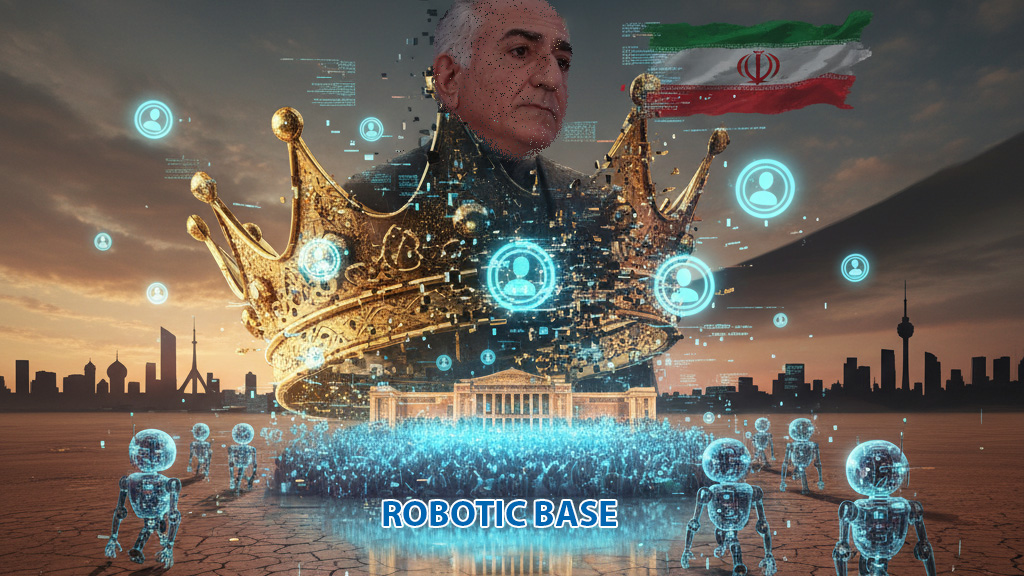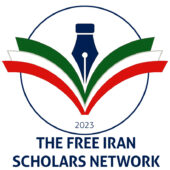
Hossein Saiedian, Ph.D.,
Kazem Kazerounian, Ph.D.
The October 3, 2025, investigative report by the Israeli daily Haaretz revealed that Israel had indirectly funded a Persian-language online network promoting Reza Pahlavi and the restoration of monarchy, an initiative that swiftly turned into a propaganda windfall for the clerical regime in Tehran.
Iran’s state-run media immediately seized upon the story, portraying it as proof that foreign powers were manipulating Iran’s political narrative. The regime used it to suggest that any opposition to the Islamic Republic was tied to an Israeli-orchestrated “royalist project.” This narrative aimed to discredit the organized democratic opposition, by falsely implying that all those who seek regime change are relying on foreign powers and want to restore monarchy in Iran, a notion disconnected from the democratic aspirations of the majority and intended to discourage popular dissent.
According to Haaretz, Raz Zimmt of the Tel Aviv-based Institute for National Security Studies observes that while most Iranians yearn for change and remain deeply frustrated by the Islamist regime, their aspirations center on leading normal, dignified lives, not on restoring the monarchy. He notes that Reza Pahlavi is far from being the preferred figure among Iranians, if only because “he hasn’t set foot in Iran since the late 1970s.” Zimmt further argues that the initiative ultimately serves to reinforce Ayatollah Khamenei’s narrative, that Israel and the United States seek to reimpose monarchical rule and turn Iran into a client state. Observers suggest that beyond its short-term propaganda value, the – initiative did little to improve Israel’s image among the Iranian public.
The response among Iranians, particularly within the global diaspora, was one of widespread indignation and ridicule. Across social media platforms, commentators denounced Reza Pahlavi, highlighting the deep-seated resentment he continues to evoke among Iranians who aspire to a secular, democratic republic. The Haaretz report further laid bare the contrived nature of the Pahlavi initiative, exposing the artificiality of his online support, which remains disconnected from and unrepresentative of the genuine aspirations of the Iranian people.
The Haaretz article revealed that a network of Persian-language fake accounts, allegedly funded by some in Israel, has been operating on platforms such as X (formerly Twitter) and Instagram to promote Reza Pahlavi and the idea of a “monarchist return.”
According to the report, these accounts used artificial intelligence to produce images and videos, often amplifying or resharing posts from Israeli officials such as Gila Gamliel. The report also noted that some of this online activity coincided with Israel’s airstrikes on Tehran’s Evin Prison, during which certain accounts circulated messages encouraging street protests under the pretext of “freeing relatives from prison.” A video clip of the attack widely disseminated by Pahlavi’s group and used by several media outlets proved to be fake.
Haaretz’s exposé immediately became headline news in Iran’s state-controlled press. It was widely framed as evidence of foreign interference in Iran’s internal politics, enhancing regime’s propaganda for justifying more suppression and rising executions in Iran.
State-run outlets, including Tasnim, Fars, and Mizan, portrayed the findings as validation of their long-standing narrative: that the opposition is not authentic but rather the product of Western or Israeli psychological operations.
According to Haaretz and follow-up reports by Radio Farda, journalists reached out to Reza Pahlavi’s office for comment, but no response was received before publication. In past interviews, including a joint press event with Israel’s then-Minister of Intelligence Gila Gamliel, Pahlavi had insisted that his popularity was self-evident, saying:
“Don’t take my word for it, search on social media … on Twitter, Instagram, any platform,” he said. “If you do the research yourself, you don’t need to ask me the question. The answer is right before your eyes.” He repeated the same claim when asked an identical question during an appearance at the Council of Foreign Relations on October 4, 2025.
Ironically, this very statement, intended as proof of his supposed popularity, has now become the core of the controversy, as the report suggests that many of those “followers” were artificially generated.
The Iranian public on social media reacted overwhelmingly with anger and ridicule. Many users called Pahlavi a traitor to the Iranian people’s struggle for democracy and described him as a divisive figure or even aiding the regime’s propaganda.
State-controlled Khorsan Daily called the online wave of monarchist content “a branch of cognitive warfare against Iran,” while others, in a bid to demoralize the public, dismissed it as a failed influence campaign detached from Iranian social reality.
The Iranian regime outlets took the opportunity in publishing editorials with headlines such as:
- “Artificial Shah with Zionist Servers”
- “From SAVAK to Tel Aviv: The Roots of the Pahlavi-Israel Connection”
- “Israel’s Gamble on a Lost Horse”
Tasnim News Agency wrote that the Israeli government’s alleged financial investment in Reza Pahlavi proved both its misreading of Iranian society and its “gamble on a losing horse.”
Mashregh News described the entire operation as Israel’s attempt at “reality engineering”—a failed effort to use deepfakes, bots, and disinformation to simulate public support for regime change under the royal banner.
The Haaretz exposé, while ostensibly an act of investigative journalism, was swiftly weaponized by the Iranian regime to advance its propaganda objectives.
The campaign handed Tehran the perfect pretext to revive its tired refrain—that shadowy foreign powers are pulling the strings of Iran’s political future. Yet, no matter how vigorously the regime attempts to use Reza Pahlavi as a tool to discredit the broader opposition, it is unlikely to succeed. For the Iranian people, Pahlavi is a spent force and a symbol of a dark and painful era—an exiled figure with no meaningful base of support inside the country.
Among Iranians, particularly within the pro-democracy diaspora, the reaction exposed a deeper reality: Reza Pahlavi commands no authentic constituency among the Iranian people, least of all inside Iran. His entire political enterprise has evolved into a source of division and discord within the opposition. Far from constituting a viable or effective alternative to the current regime, or even representing a meaningful segment of the opposition, the Pahlavi project has instead become a serious impediment to the broader pro-democracy movement.
Increasingly, as many Iran analysts observe, Reza Pahlavi’s public posture, wittingly nor not, has served the regime’s interests by deflecting scrutiny from its ongoing brutality and reinforcing Tehran’s narrative of an opposition orchestrated by “foreign powers.”
In the end, this episode laid bare a simple reality: the authentic power of Iran’s movement for change lies not in foreign sponsorship or digital manipulation, but in the genuine and democratic resistance that has paid the price of freedom with its own blood and human treasure.
It is this enduring, home-grown struggle for a free, democratic, and secular republic that represents the true voice of Iran, not any manufactured nostalgia for monarchy.
Professors Hossein Saiedian and Kazem Kazerounian are at the Universities of Kansas and Connecticut, respectively.
